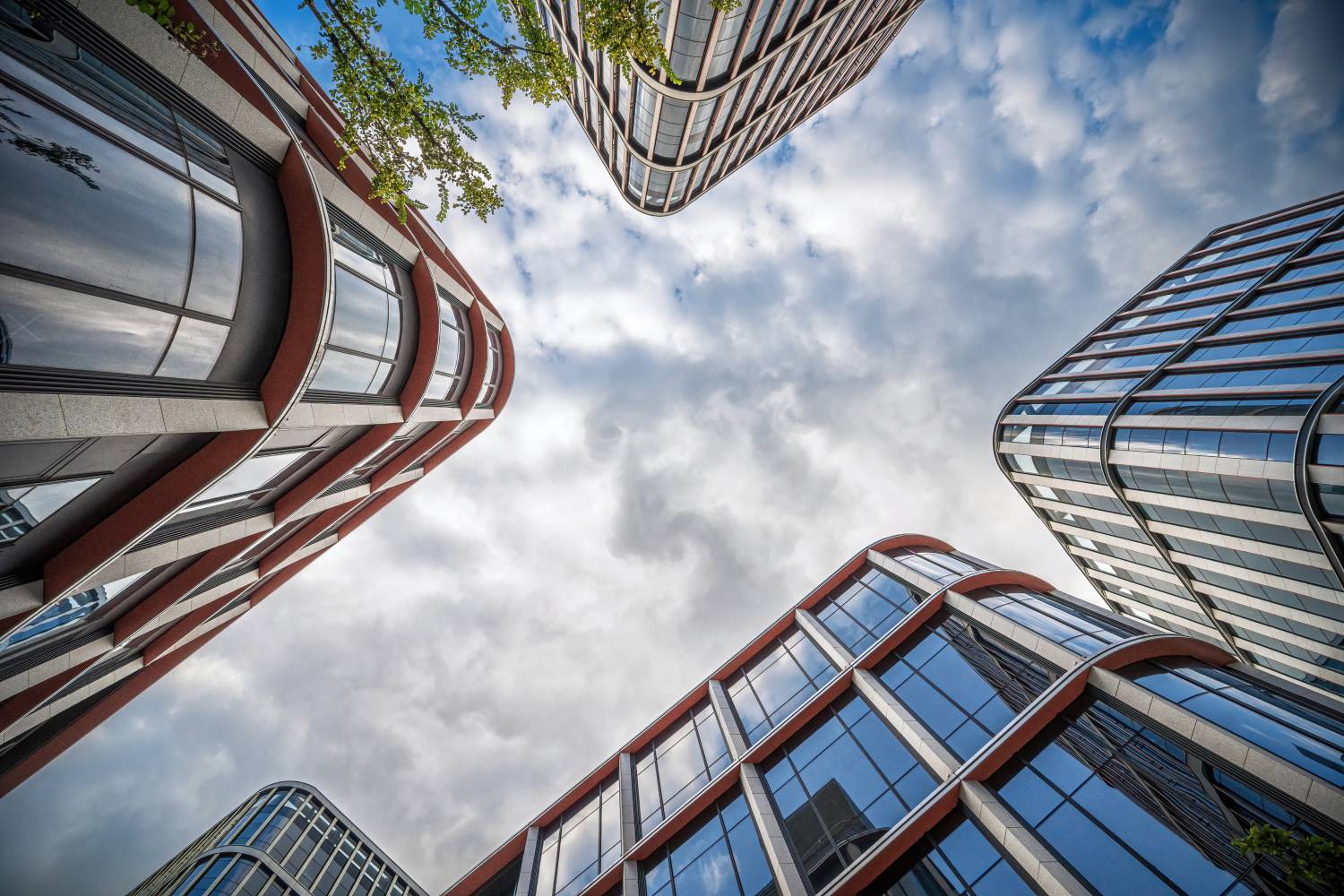As the world grapples with environmental challenges, sustainable architecture has become a cornerstone of modern design. Fuse Architecture Studio is committed to leading the charge with innovative materials and technologies that reduce environmental impact and improve the functionality of buildings and various commercial projects. In this blog post, we explore some of the most exciting advancements in eco-friendly design, from sustainable building materials to energy-efficient technologies.
Sustainable Building Materials
Recycled and Reclaimed Materials
Sourcing recycled and reclaimed materials has been a cost-effective and eco-friendly approach to construction for many years. Using materials like reclaimed wood, recycled plastic lumber, recycled steel and other metals, and glass helps reduce waste and conserve natural resources. These sustainable construction materials are found in everything from structural elements to decorative finishes. Recycled material usage gives buildings a unique, timeless appeal while minimizing the carbon footprint associated with producing new materials.
Low-Carbon Concrete Alternatives
Concrete production is one of the leading contributors to global carbon emissions. Fortunately, low-carbon concrete alternatives are emerging as a game-changer in sustainable architecture. Green concrete technologies, such as carbon capture, help reduce the environmental impact of construction projects. These alternatives for concrete structures maintain the durability of traditional concrete but with a fraction of the carbon emissions.
Sustainable Insulation Materials
Proper insulation is key to energy efficiency, and eco-friendly options are available. Materials like cellulose, sheep wool, and cork are renewable, non-toxic, and provide excellent thermal insulation. These sustainable building materials help maintain comfortable indoor temperatures while reducing the need for energy-intensive heating and cooling systems. As a bonus, they also have a much smaller environmental footprint compared to traditional fiberglass insulation.
Innovative Technologies in Eco-Friendly Design
Smart Glass and Windows
One of the most exciting advancements in sustainable building technologies is smart glass, also known as electrochromic glass. This sustainable building material can adjust its tint based on the intensity of sunlight, reducing the need for artificial lighting and air conditioning. Smart glass systems allow architects to design buildings that naturally regulate indoor temperatures, contributing to significant energy savings.
Green Roof and Living Wall Systems
Green roofs and living walls provide a natural way to insulate buildings and improve air quality. By adding vegetation to rooftops and exterior walls, architects can reduce heat absorption, which lowers the building’s cooling needs. Additionally, green walls help purify the air and provide a calming, natural aesthetic that enhances the well-being of occupants. These systems are especially beneficial in urban environments, where green space is limited.
Solar Power Integration
Integrating solar panels into building designs has become more seamless with the development of Building-Integrated Photovoltaics (BIPV). These solar panels can be incorporated directly into roofing materials and facades, making them nearly invisible while still harnessing the power of the sun. BIPV systems reduce the reliance on traditional energy sources and help buildings achieve net-zero energy consumption.
Energy-Efficient Technologies
Passive Design Strategies
Passive design focuses on maximizing natural light, ventilation, and thermal insulation to reduce energy consumption. By strategically positioning windows, using high-performance glass, and incorporating natural ventilation, architects can design buildings that rely less on mechanical heating and cooling systems. These strategies create energy-efficient structures that are comfortable year-round.
Energy-Efficient HVAC Systems
Heating, ventilation, and air conditioning (HVAC) systems account for a large portion of a building’s energy use. The sustainable construction of HVAC systems, such as geothermal heating and energy recovery ventilation, are designed to optimize energy efficiency. Geothermal systems use the Earth’s natural heat to regulate indoor temperatures, while energy recovery systems capture and reuse energy that would otherwise be lost, making buildings more sustainable.
Smart Home Technologies
With the rise of the Internet of Things (IoT), smart home technologies have revolutionized energy management. Automated lighting systems, smart thermostats, and energy monitoring devices allow homeowners, schools and businesses to optimize energy usage. These technologies can be programmed to adjust lighting and temperature settings based on occupancy, significantly reducing energy waste.
Future Trends in Eco-Friendly Architecture
Biomimicry in Design
Biomimicry takes inspiration from nature to solve human challenges in sustainable design. By studying natural ecosystems, architects can create buildings that are energy-efficient, resilient, and self-sustaining. For example, some buildings mimic termite mounds, using natural ventilation systems to regulate temperature without relying on energy-intensive HVAC systems.
3D Printing with Sustainable Materials
3D printing is revolutionizing the construction industry by enabling architects to create structures with minimal waste. This technology is increasingly being used with eco-friendly construction materials, such as bioplastics and recycled materials, to further reduce the environmental impact of construction. 3D-printed structures are not only sustainable but also allow for unprecedented design flexibility.
Water Conservation Technologies
Water conservation is an essential component of sustainable building design, especially in regions prone to drought. Rainwater harvesting systems, greywater recycling, and water-efficient fixtures can significantly reduce water usage. These technologies allow buildings to minimize their water footprint while still maintaining modern comforts.
Create an Eco-Friendly Project with Fuse Architecture Studio
As we look to the future, it’s clear that innovative materials and technologies will continue to play a vital role in creating eco-friendly designs. At Fuse Architecture Studio, we are dedicated to incorporating eco-friendly advancements into our projects in Austin and beyond to help clients reduce their environmental impact while achieving beautiful, functional spaces. By embracing sustainable materials, energy-efficient technologies, and future-forward designs, we can build a greener future for generations to come. Contact one of our commercial architects in Austin, TX, today to get started.

